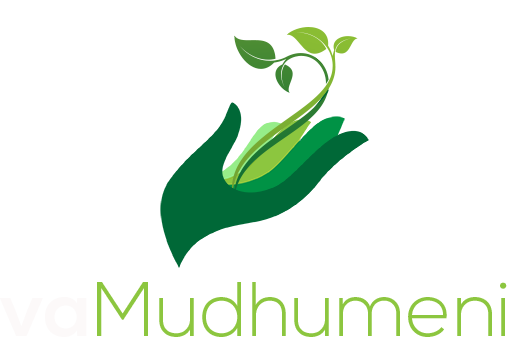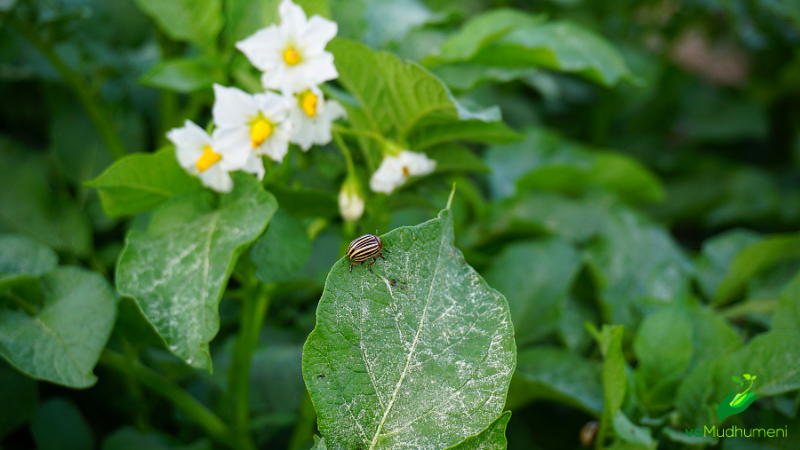Identification And Treatment
By Albert Makendenge
Common Diseases
- Bacterial Wilt – Caused by a bacterium which depends on high temperatures and high moisture. Signs include rapid wilting of the plant, while the leaves stay green. If an infected stem is cut cross wise, it will look brown and tiny drops of yellowish ooze may be visible. Rotation with non-susceptible plants, removal of all infected plant material and use of certified seeds are some of the preventative and treatment control measures since there is no chemical control for this disease.
- Early Blight – Caused by a fungi and it is first observed on the plants as small, brown lesions mostly on the older foliage. These spots get bigger with time and tissues surrounding them may turn yellow. Prevention and treatment of this disease involves the use of chemicals such as Mancozeb, Chlorothalonil or Copper Fungicides as well as crop rotation and the use of resistant or tolerant tomato cultivars.
Common Pests
- Aphids – these are tiny winged, wingless and sap sucking insects that are often found on the underside of the leaves. They weaken plants, cause stunted growth and leads to rolling up of leaves. Apart from natural predators such as ladybugs, soapy water can also be used to knock off these of the leaves.
- Slugs and snails – these leave large holes on both the leaves and the fruits. Look for accompanying slime trails to positively identify. Control measures include watering directly above the root crown and not the entire garden since snails love moist environments; inspecting plants regularly and handpicking unwanted visitors;, employing traps and barriers and spraying a ring of diatomaceous (fine-grained, porous and powdery earth mostly made up of silica) earth around the plants to prevent them from reaching crops.
Common Diseases
- Bacterial Leaf Blight – a bacterial disease that causes water-soaked linear lesions on the leaves; Lesions which later on turn gray or white. Resistant hybrids should be used in areas where this disease is prevalent.
- Maize Mosaic Virus – a viral disease whose main symptoms include the appearance of chlorotic mottling on leaves which starts from the base and extends upwards. For management of this disease, farmers should use healthy, disease free certified seeds; keep the field free from weeds; remove infected plants and burn them as well as controlling the vectors (aphids, leaf beetles etc.) treating the seed with a suitable insecticide
Common Pests
- Nematodes – Galls can be seen on the roots due to nematode feeding. Above ground plants are stunted, yellow and patchy in growth. Crop rotation, growing resistant varieties, fumigation with suitable nematicides (Vydate, Nimitz, and Dazomet) and deep summer ploughing helps to reduce their population.
- Cutworms – stems of young plants get usually get severed at soil line. Management of this pest includes removing all plant residue after harvest or two weeks before planting. Effective chemicals against cutworms include Carbaryl, Cyfluthrin and Permethrin
Common Diseases
- Common Blight – a bacterial disease that causes water soaked spots on the leaves. As they develop, the spots become necrotic, light brown, irregular shaped lesions with distinct, bright yellow margins. Use of certified seeds, crop rotation and copper applications are some of the treatment and control measures.
- Bacterial Brown Spot – a bacterial disease that is identified by brown spots that initially appear as small, circular, necrotic (brown) spots on the leaves. Management strategies for this disease include crop rotation, the application of copper-based bactericides and the use of resistant varieties.
Common Pests
- Cutworms – These cut down young plants as they feed in stems. Physical removal is effective in many cases. Pesticide options (carbaryl) should also be used when cutworm problems are more severe.
- Stem nematode – The pest is usually seed borne and can also infest soils. They survive on plant tissues. Seeds should be tested for nematodes before planting and only clean stocks should be sown. Suitable nematicides should also be used.
Common Diseases
- Downy Mildew – a fungal disease that causes death of seedlings. White cottony growth is usually present on leaf undersides and maybe chlorotic with thickened leaves. Use of appropriate fungicides (Mancozeb and Chlorothalonil) and use of resistant varieties should be done.
- Powdery Mildew – Also a fungal disease whose signs include powdery white patches which appear initially on lower leaves and later on spreading to all above ground parts of the plant. For treatment and control, use appropriate foliar fungicides and allow adequate spacing between plants to promote good air circulation.
Common Pests
- Black Scarab Beetles – Larvae feed on taproots and adult beetles can defoliate and kill plants up to 40 cm tall. Spray when beetles are active on the soil surface and remove weeds that act as hosts for the pests.
- Cutworms – These cause the collapsing of plants by severing stems at ground level. Weeds should be controlled prior to planting and spot spraying of identified patches should be done.
Common Diseases
- Brown Spot – A fungal disease that is identified by small, circular, target-like spots on lower leaves. Lesions are usually surrounded by a bright yellow halo. Remove crop residues after harvesting, control nematodes in the soil and ensure plants have adequate potassium for vigorous growth.
- Blue Mold – This fungal disease causes leaves to go yellow and leaves them distorted. Fluffy blue spores also develop on the underside of the leaves. For management of the disease, avoid over fertilizing the crop and avoid the use of overhead irrigation which creates favorable conditions for the development of the fungus. Application of appropriate fungicides should also be done.
Common Pests
- Green Peach Aphid – These damage the tobacco by sucking plant juices from the leaves and cause them to curl. Soap solutions, white or vegetable oil can be effective in chemical control and cultural control can include removing and burning crop residues as well as planting resistant varieties.
- Granulate Cutworm – Apart from cutting off newly set plants earlier on, they may, later on in the season, climb up the stalks and cut entire leaves off the plants. Baits, particularly known as bran-based baits, seem particularly effective. Insecticides delivered as liquid or granules are also important in controlling the pest.
Common Diseases
- Early Blight – Causes small black lesions on leaves. Surrounding areas may turn yellow. Use resistant varieties and avoid overhead irrigation.
- Late Blight – The disease damages leaves, stems and tubers leaving them black or brown colored. Chemicals such as Mancozeb and Cymoxanil can be effective. Resistant varieties should also be used.
Common Pests
- Potato Bugs – The bright yellow/orange bodied insect with brown stripes mainly feeds on leaves and can greatly reduce yield. Use soapy water, Azadirachtin, Pyrethrin or Sinosad sprays. Also use resistant varieties and shake off bugs from the plants.

